During the synthesis module, Shreya and I attempted to weave together several threads of thought that we had discovered over the course of the semester into a rich tapestry of coherent and cohesive ecological design. To accomplish this, we started from a basic assumption about what a low density affordable residential unit could encapsulate. Instead of proposing a bold and unique form, we opted to maintain a relatively simple massing that prioritized outdoor space for residents, as well as natural lighting and ventilation. From there, we iterated on an envelope that could provide several functions at once: shading for thermal control, visual blocking for privacy, and a physical means to mount blinds and planting structures. The structure of the envelope also acts as a scaffolding for the gutters which bring water from the garden beds on the balconies down to the cistern in the basement. From these main assumptions, we attempted to construct a final model that embodied all the lessons of ecological design we had learned over the course of the semester.
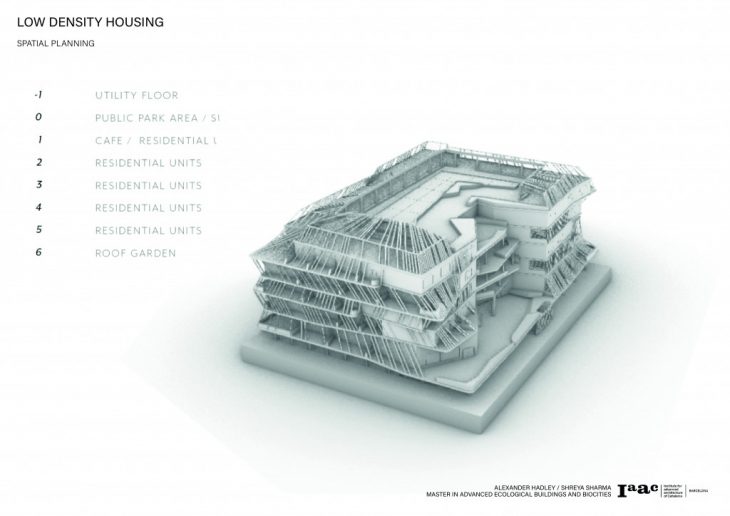
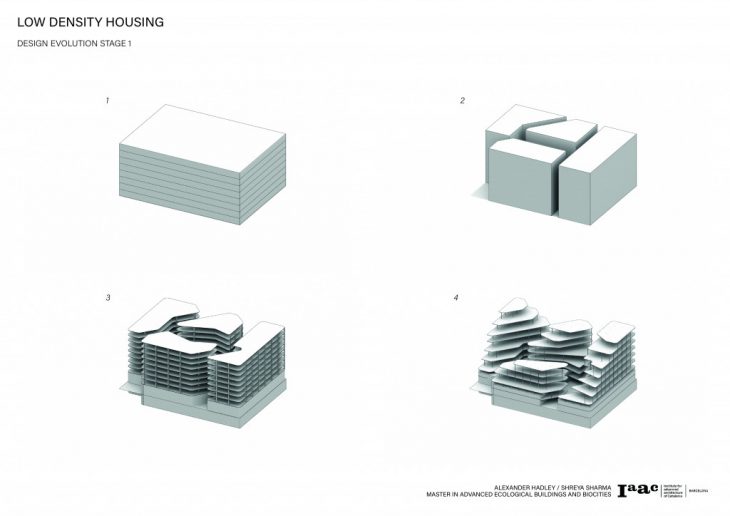
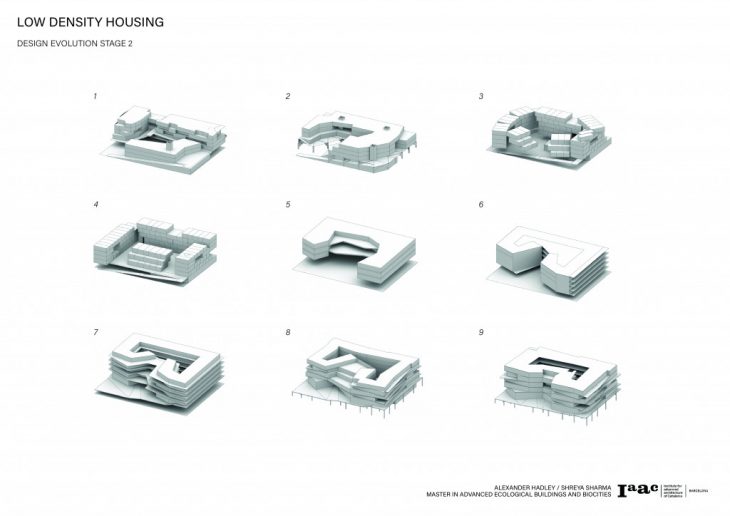
While we navigated through the design process, we made sure to document and maintain a running archive of each evolution of our model massing. We had some idea of a negative space our courtyard at the center from the beginning, which can be seen in step 1 above. We also wanted to allow for street level access to the first level, which could serve as a semi private cafe terrace that is elevated above the street. In step 4, we started to incorporate the scale of apartments that we needed to provide, which informed us of how many levels we should have. Step 6 shows how we eventually wrapped these apartment units around the courtyard in a ‘mustache’ configuration. Steps 7-9 detail how we refined this shape to conform to the spatial needs of circulation as well as balcony articulation.
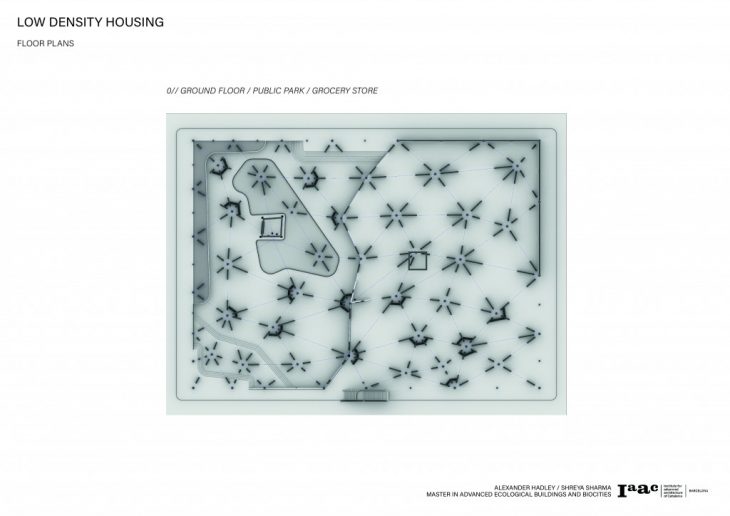
The lower floor of the project serves as an arcade, featuring wooden columns that explode out from the central nodes of structural support. The pool and benches create an atmosphere similar to a pocket park, inviting residents and neighbors to occupy and enjoy the unique space created by the lifting of the first floor.
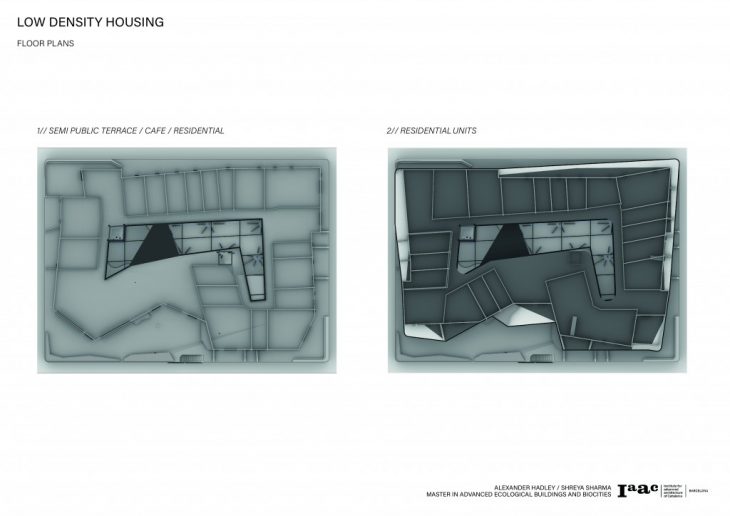
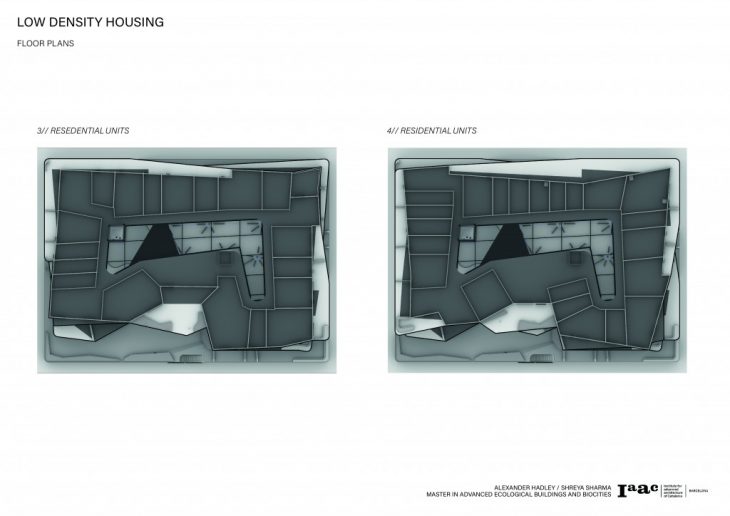
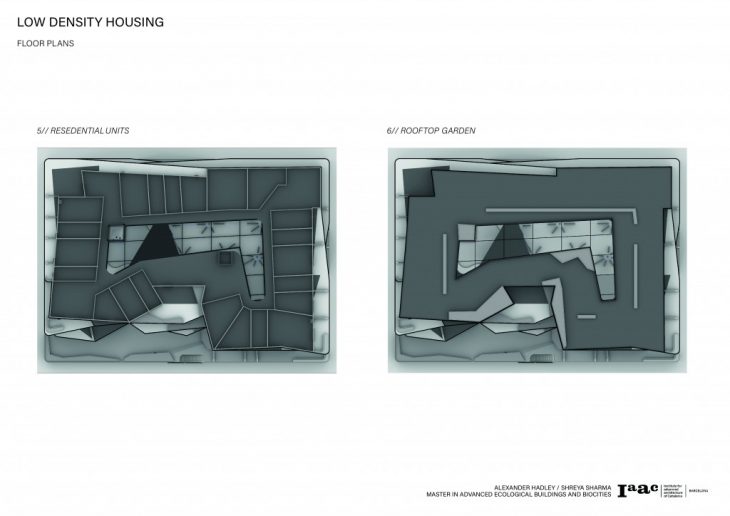
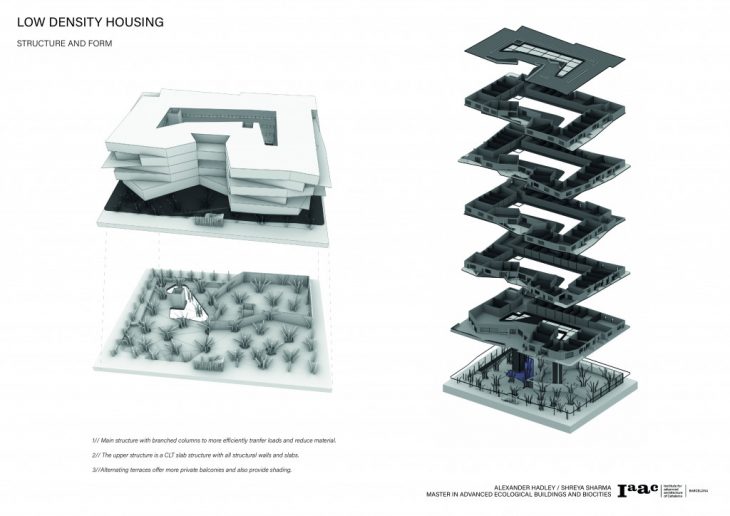
Structurally, our building employs two schemes. The first floor is a network of columns constructed from glulam beams inserted into metal cuffs. The spacing of the columns is in some way topological, in that it deforms according to the weight loads placed above it. The number of columns is related to the number of connections the network makes to other nodes. Some of the nodes replace the central glulam beam with a metal pipe for transporting waste from the apartments to the waste-to-energy facility located in the basement.
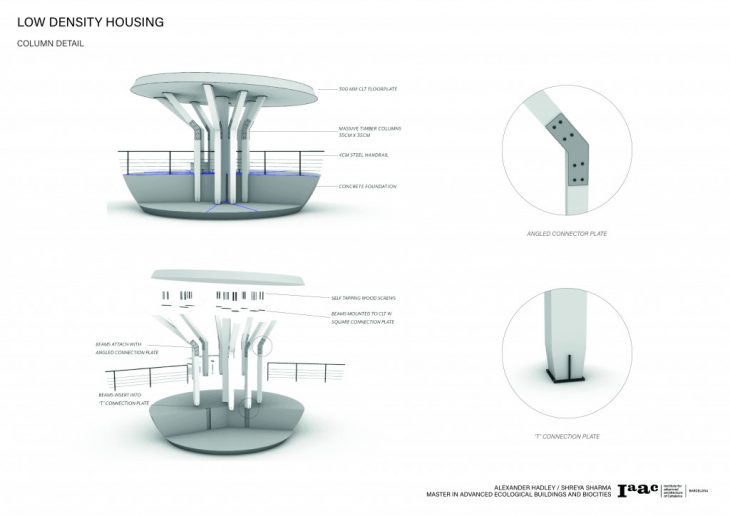
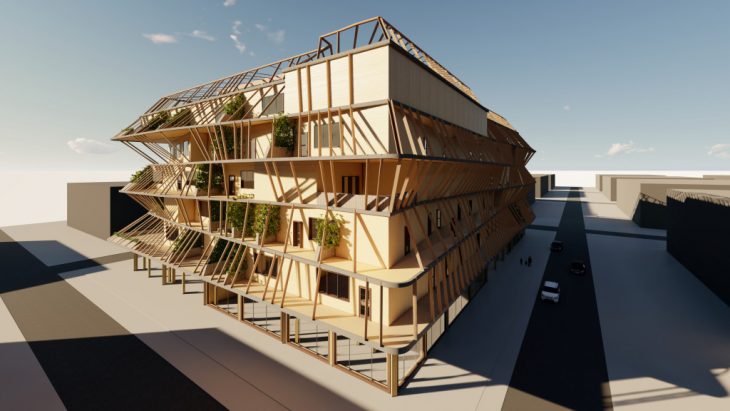
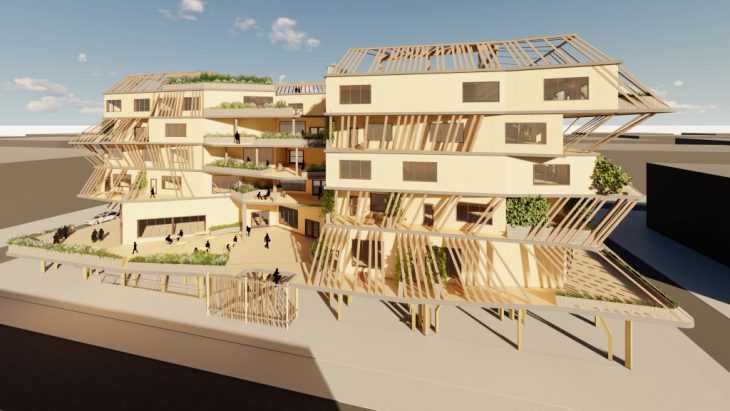
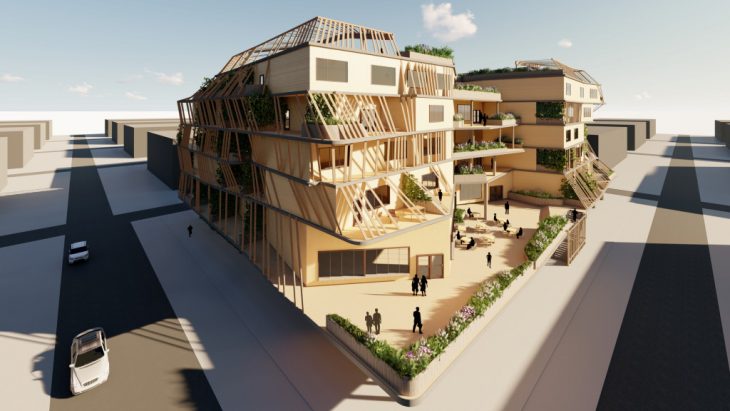
Our project hopes to encapsulate an idea of simplicity and modesty within the discipline of ecological buildings. Not all ecological buildings have to look like space ships or sci-fi interventions. In fact, a building which looks benign could in fact be the most ecologically advanced building, if only its metabolism and material choice is relevant to the context in which it is created.